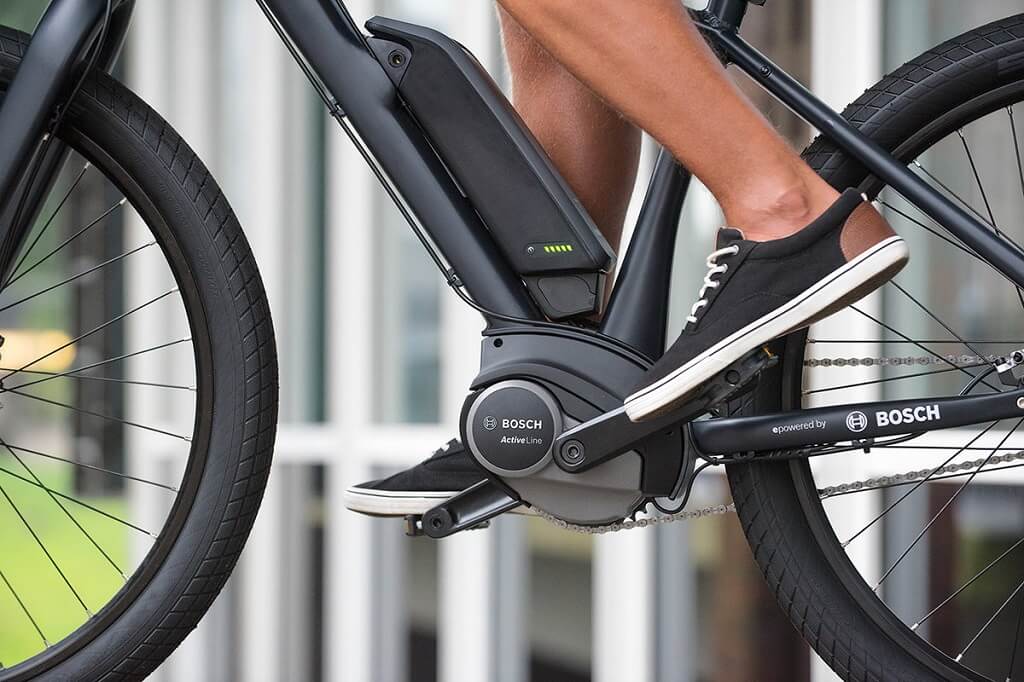Throughout recent years’ excellent electric bicycles on the market, their batteries, motors, controllers, and sensors are integrated very simply and reasonably: the battery is generally integrated into the down tube, and the motor, controller, and sensor are integrated into the bottom bracket. This kind of gearbox structure located in the bottom bracket is called a “mid-drive motor”.
The mid-drive motor is currently the best solution for electric bicycles, most mid-range and high-end e-bikes all adopt this solution. So, what are the advantages of mid-drive motors compared to hub-drive motors?
Table of Contents
1. Lower Rolling Resistance And Higher Energy Conversion Rate
The hub-drive motor is generally a brushless motor that has a really simple structure. It is driven by electromagnetic induction: it affects the motor speed by controlling the magnitude of the current. However, limited by its traditional structure, rotating friction, motor heat accumulation, etc., the hub-drive motor has a lower conversion rate of electric energy to kinetic energy which is only between 70-80%. In addition, hub-drive motors have always had a “Magnetic Leakage” phenomenon, which means the electromagnetic resistance generated by the motor will gradually increase as the battery power is consumed. The electric bike will be more and more difficult to continue riding without electricity.
The mid-drive motor collects the power signal acting on the pedals and then cooperates with the clutch, driveshaft, differential, and other components to apply the output kinetic energy to the crankset to assist the rider in pedaling. For some world-renowned mid-motor manufacturers (such as Bosch, Yamaha, Bafang), the conversion rate of electrical energy to kinetic energy is generally above 90%. In the case of no battery power, the mid-drive motor is completely separated from the bottom bracket axle, and there is no magnetic resistance. Therefore, when the battery is exhausted, you can still ride unimpeded.

2. More Torque
Even with the addition of a torque sensor, the hub-drive motor can still only control the speed through the magnitude of the current, simply increasing the motor’s rotating speed to increase the torque. This will result in greater power consumption, more energy waste, and lower overall efficiency.
The more technologically advanced mid-drive motor is a combination mechanism of internal transmission gears. Multiple clutch gears form a variable-speed ratchet inside the motor, which will increase the output torque and has a higher load and climbing ability. And its torque sensor is more sensitive, sensing changes in the pedaling force of the crank, which will directly act on the bottom bracket axle and accelerate faster.
3. A More Reasonable Center Of Gravity
Due to the high weight of the hub-drive motor, whether it is placed on the front wheel or the rear wheel, the center of gravity of the bicycle will not be balanced. Moreover, when the motor is assisting, it will cause a strong sense of frustration, which is not suitable for controlling the bicycle and seriously affects the riding experience. In addition, the rotating inertia generated by the motor’s own weight will increase the load of the braking system.
The mid-drive motor has a better gravity balance, it will not affect the balance of the bicycle under fast driving, and does not need additional batteries for counterweight. Therefore, most newly released electric bikes integrate the battery in the down tube. It will also reduce the burden on the braking system, improve braking performance and extend the life of the braking system.

4. Less Wiring And A Higher Degree Of Integration
Many components are integrated into the mid-drive motor, with only a few wires extending out to connect to the handlebar controller. This simplified and integrated design makes the bicycle has a more concise appearance and convenient maintenance.
5. Lower Failure Rate
The hub-drive motor e-bikes have many external components, they will increase the failure rate in daily use.
But, the mid-drive motor has a very high degree of integration, and can generally reach a protection level above IP65, it can completely resist dust intrusion and water jets at any angle.


